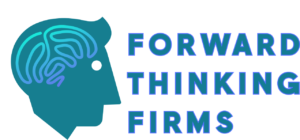
Understanding the Core of Consultative Selling
Consultative selling is far more than a sales technique—it is a philosophy that redefines how businesses approach prospects and customers. Instead of pushing products or services through rehearsed pitches, this method focuses on creating a dialogue where the buyer feels heard, valued, and guided toward the best solution. It’s about moving away from transactional interactions to conversations that prioritize the customer’s specific goals and challenges. Unlike traditional methods that often emphasize features and price, consultative selling helps sales professionals uncover deeper motivations behind a buyer’s decision-making process. This approach requires active engagement, deep questioning, and genuine curiosity about the client’s needs. The foundation lies in building a relationship that is rooted in trust and long-term collaboration. When done effectively, it shifts the role of a salesperson into that of a trusted advisor, making the entire sales experience more rewarding for both sides.
The Benefits of Consultative Selling Training Programs
Organizations that invest in consultative selling training programs often see transformative results. One of the most immediate benefits is stronger client relationships. Buyers are more likely to return to a salesperson who listens carefully and tailors recommendations, rather than one who follows a rigid script. Over time, this creates loyalty that drives repeat business and referrals. Another major benefit is enhanced credibility. Sales teams trained in this methodology are perceived as experts who can diagnose problems and offer practical, personalized solutions. This leads to higher conversion rates because prospects are less resistant when they feel understood. Beyond sales metrics, employees gain confidence in their communication skills, which can improve collaboration across departments. Teams that adopt consultative selling also tend to shorten their sales cycles since trust accelerates decision-making. For companies facing competitive markets, this training offers a powerful edge by turning customer-centricity into a measurable business advantage.
Essential Skills Taught in Consultative Selling Training Programs
The effectiveness of these programs lies in the critical skills they instill in participants. One of the most emphasized is active listening, which ensures the salesperson captures not just the words but also the underlying concerns of the buyer. Equally important is the art of asking powerful questions—open-ended inquiries that help uncover challenges and future goals. Emotional intelligence and empathy also take center stage, teaching professionals to connect on a personal level and adjust their approach based on customer responses. Another vital skill is objection handling, reframed not as a confrontation but as an opportunity to provide clarity and reassurance. Storytelling is also a key tool, as it allows salespeople to paint a picture of how a solution can transform a client’s business. Finally, training emphasizes the ability to position solutions in a way that highlights value over price, which is essential for building long-term partnerships. Each of these skills forms the backbone of consultative selling, making the training deeply practical.
Structure of Effective Consultative Selling Training Programs
A well-designed consultative selling training program is structured to balance theory with application. The curriculum often starts with foundational concepts, introducing participants to the mindset shift required to sell consultatively. From there, modules typically progress into role-playing exercises that replicate real-world sales scenarios, allowing trainees to practice skills in a safe environment. Interactive workshops also play a key role, offering opportunities for peer feedback and group learning. Some programs integrate one-on-one coaching sessions to provide personalized guidance and address specific challenges. Training may also include digital learning components, such as video lessons or interactive simulations, making it easier for teams to review material at their own pace.
Many programs follow a layered approach:
- Phase 1: Building awareness and understanding of consultative selling principles
- Phase 2: Practicing through role-play and coaching
- Phase 3: Applying lessons in real customer interactions with ongoing support
- Phase 4: Reinforcement sessions to ensure skills remain fresh and effective
This structure ensures participants not only learn but also retain and apply the skills effectively over time.
How Consultative Selling Training Programs Improve Sales Team Performance
Sales teams that embrace consultative selling training experience measurable improvements in their performance. Instead of relying on memorized product pitches, professionals begin to focus on problem-solving, aligning solutions with customer priorities. This shift enhances credibility, as buyers recognize the salesperson’s genuine effort to understand their needs. Another improvement is consistency across the sales organization. When everyone follows a consultative framework, customers receive a uniform, high-quality experience regardless of which salesperson they interact with. These programs also encourage collaboration between sales and marketing teams, as both groups align around customer insights to craft messaging that resonates.
Performance gains are often visible in metrics such as:
- Shorter sales cycles due to increased trust
- Higher conversion rates from prospect to customer
- Improved cross-selling and upselling opportunities
- Greater retention and renewal rates among existing clients
By applying the consultative mindset, teams not only close more deals but also build stronger pipelines for sustainable growth.
Choosing the Right Consultative Selling Training Program for Your Business
Not all training programs are created equal, so selecting the right one is critical. The first consideration should be industry relevance—training tailored to your sector will resonate more with participants and address specific challenges. Team size also matters; larger organizations may benefit from scalable hybrid formats, while smaller teams might prefer more personalized coaching sessions. The sales cycle length and complexity should guide program selection as well, since a B2B enterprise solution requires a different approach compared to fast-moving consumer products.
Other factors to weigh include:
- Trainer expertise: Look for facilitators with proven experience in consultative sales.
- Customization options: Programs that adapt to your company’s goals tend to drive better outcomes.
- Learning format: Decide between in-person, virtual, or hybrid training depending on your team’s flexibility.
- Measurable ROI: Strong programs provide tools to assess knowledge retention and sales performance improvements.
By carefully evaluating these elements, companies can maximize the return on investment from consultative selling training programs.
Common Challenges Sales Teams Face Without Consultative Selling Training
Teams that lack consultative selling training often face recurring roadblocks that hinder performance. A major challenge is over-reliance on rigid scripts, which makes conversations feel impersonal and mechanical. Buyers quickly sense when they are being treated as a transaction rather than a valued partner. Another issue is difficulty navigating complex buying processes, particularly in B2B environments where multiple decision-makers are involved. Without training, salespeople may struggle to ask the right questions, leading to missed opportunities for deeper engagement.
Other common struggles include:
- Losing deals due to weak rapport and lack of trust
- Relying heavily on discounts rather than value-driven selling
- Poor objection handling that creates customer resistance
- Limited ability to upsell or cross-sell effectively
These challenges can result in longer sales cycles, lower win rates, and declining morale. Training addresses these gaps by equipping teams with the tools and confidence they need to succeed in today’s buyer-driven marketplace.
Integrating Consultative Selling into Daily Sales Practice
One of the greatest challenges organizations face is ensuring that training translates into long-term behavior change. Integration into daily practice begins with reinforcement. After formal training, regular refresher sessions help solidify new skills. Sales leaders play a critical role in modeling consultative behaviors and creating accountability through coaching and performance reviews. Teams can also benefit from leveraging technology such as CRM systems, where notes and insights from customer conversations can be tracked to personalize follow-ups.
To strengthen integration, businesses can:
- Encourage peer-to-peer feedback on sales calls
- Provide job aids such as checklists for discovery meetings
- Recognize and reward consultative behaviors
- Align sales goals with customer satisfaction metrics
When consultative selling becomes embedded in a company’s culture, it transforms from a training initiative into a sustainable competitive advantage.
Frequently Asked Questions (FAQ)
What industries benefit most from consultative selling training programs?
Industries with complex products or services—such as technology, healthcare, financial services, and B2B manufacturing—gain the most, but any field with customer-facing sales teams can benefit.
How long does it typically take to see results from training?
Many organizations notice improvements within three to six months, especially when reinforcement and leadership support are in place.
Is consultative selling suitable for both B2B and B2C markets?
Yes, while it is most common in B2B, B2C professionals in high-value or relationship-driven industries also see strong results.
Can smaller sales teams also benefit from these programs?
Absolutely. Small teams often adapt faster because training can be highly personalized and cultural adoption is easier.
What’s the difference between consultative selling and solution selling?
Consultative selling focuses on discovering customer needs and guiding them, while solution selling emphasizes tailoring a product or service to meet those identified needs. They are complementary approaches but consultative selling is broader in scope.
Takeaway
Consultative selling training programs are more than a professional development investment—they are a strategic advantage that transforms salespeople into trusted advisors. By teaching skills like active listening, empathy, storytelling, and problem-solving, these programs elevate both customer experiences and business results. Companies that embrace this method consistently see stronger relationships, higher revenue, and greater customer loyalty. Whether in a small business or a global enterprise, integrating consultative selling into daily practice ensures that sales teams are equipped to thrive in an increasingly customer-centric world.


